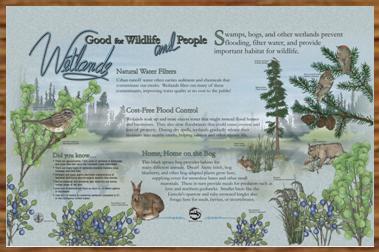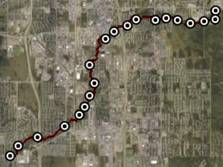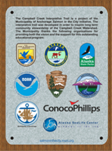Spruce Bog Display - 61° 10' 44" N, 149° 47' 59" W

■



|
 Visit the Trail Visit the Trail(Google Earth Required) |
 Site Navigation |
 
|
 
|
|
Spruce Bog Display - 61° 10' 44" N, 149° 47' 59" W |
 ■ |
|||||


|
||||||
|
|
Wetlands Good for Wildlife and PeopleSwamps, bogs, and other wetlands prevent flooding, filter water, and provide important habitat for wildlife.Natural Water FiltersUrban runoff water often carries sediment and chemicals that contaminate our creeks. Wetlands filter out many of these contaminants, improving water quality at no cost to the public! Cost-Free Flood ControlWetlands soak up and store excess water that might instead flood homes and businesses. They also slow floodwaters that could cause erosion and loss of property. During dry spells, wetlands gradually release their moisture into nearby creeks, helping salmon and other aquatic life. Home, Home on the BogThis black spruce bog provides habitat for many different animals. Dwarf Arctic birch, bog blueberry, and other bog-adapted plants grow here, supplying cover for snowshoe hares and other small mammals. These in turn provide meals for predators such as lynx and northern goshawks. Smaller birds like the Lincoln's sparrow and ruby-crowned kinglet also forage here for seeds, berries, or invertebrates. Did you know...
|